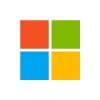PHP (Hypertext Preprocessor) is a widely-used, open-source scripting language that is especially suited for web development. It is a server-side language that is designed to create dynamic web pages and applications, and it has a rich set of features that make it a popular choice among developers. This overview will cover the history, architecture, features, advantages, disadvantages, and typical use cases of PHP.
1. History of PHP
PHP was created by Danish-Canadian programmer Rasmus Lerdorf in 1994. Initially, it stood for “Personal Home Page,” as it was intended for tracking visitors to his online resume. Over time, PHP evolved into a robust scripting language with extensive capabilities, especially after the release of PHP 3 in 1998, which introduced many new features and a more modular architecture. PHP 5, released in 2004, brought significant improvements, including support for object-oriented programming. The latest major version, PHP 8, introduced performance enhancements, a JIT (Just-In-Time) compiler, and new language features, continuing to evolve to meet modern development needs.
2. Architecture of PHP
PHP operates on a client-server architecture, where it runs on a web server and generates HTML to send to clients’ browsers. The PHP runtime can be installed on various server environments, including Apache, Nginx, and Microsoft IIS. It interacts with databases, typically MySQL or PostgreSQL, to retrieve and manipulate data.
Basic Flow:
- A client (browser) requests a PHP page from the server.
- The server processes the PHP code within the requested file.
- The PHP code may interact with a database or perform computations.
- The server generates HTML output and sends it back to the client.
3. Key Features of PHP
- Cross-Platform Compatibility: PHP runs on various platforms, including Windows, macOS, and Linux, making it highly versatile.
- Database Support: It supports multiple database systems, notably MySQL, PostgreSQL, SQLite, and Oracle.
- Rich Ecosystem: PHP boasts a vast ecosystem of frameworks (like Laravel and Symfony) and content management systems (like WordPress and Drupal).
- Extensive Library Support: PHP includes built-in functions and libraries for tasks such as file handling, session management, and form validation.
- Error Reporting: PHP has a robust error handling system that helps developers debug applications effectively.
- Support for Object-Oriented Programming: PHP supports OOP principles, enabling developers to create modular and reusable code.
4. Advantages of PHP
- Ease of Learning: PHP has a relatively low learning curve, making it accessible to beginners.
- Community Support: With a large community of developers, PHP users have access to a wealth of resources, forums, and documentation.
- Cost-Effective: As an open-source language, PHP is free to use, which lowers development costs.
- Performance: PHP is optimized for web development, and with recent versions, performance has significantly improved.
- Flexibility: PHP can be embedded within HTML, allowing for seamless integration of server-side code in web pages.
5. Disadvantages of PHP
- Inconsistent Naming Conventions: PHP has a variety of functions and inconsistencies in naming, which can be confusing for developers.
- Security Concerns: Being a popular language, PHP is often targeted by attackers. Developers need to implement proper security measures.
- Performance Compared to Compiled Languages: While PHP has improved in performance, it may still lag behind compiled languages like Java or C# in certain scenarios.
6. Typical Use Cases
- Content Management Systems (CMS): PHP powers many popular CMS platforms, such as WordPress, Joomla, and Drupal.
- E-commerce Platforms: Many e-commerce websites use PHP for their backend, providing robust functionality and database interactions (e.g., Magento, WooCommerce).
- Web Applications: PHP is frequently used to build dynamic web applications ranging from simple forms to complex systems.
- APIs: PHP can be used to create RESTful APIs, enabling data exchange between clients and servers.
7. Popular PHP Frameworks
- Laravel: Known for its elegant syntax and robust features, Laravel is popular for building modern web applications quickly and efficiently.
- Symfony: A highly flexible framework that emphasizes modularity and scalability, making it suitable for large-scale enterprise applications.
- CodeIgniter: A lightweight framework that is easy to set up, making it ideal for beginners and small applications.
- Yii: A high-performance framework that is particularly suited for developing web applications quickly.
8. Conclusion
PHP remains a cornerstone of web development, with its versatility, ease of use, and extensive community support. While it faces competition from newer languages and frameworks, its ability to power dynamic websites and applications ensures its continued relevance. Understanding PHP’s features, advantages, and use cases can help developers harness its potential effectively, contributing to the success of their web projects.



